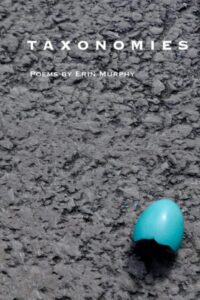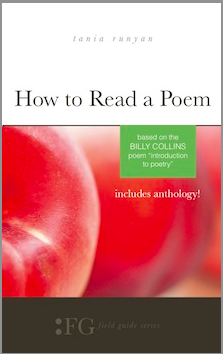
Four collections by poet Erin Murphy offer thematic insight.
Erin Murphy is a professor of English at Pennsylvania State University, Altoona College. She may also be one of the most prolific writers and poets working in academia. She’s written or edited some 14 books, four in the last three years alone, with another poetry collection and an anthology of essays in the publishing pipeline. Her first poetry collection, Science of Desire, was published in 2004; her most recent, Human Resources, was published this year. She also serves as editor of The Summerset Review.
You can wear yourself out just reading her biographical information: collections, books, prizes, teaching awards, nominations, journals and magazines publishing more than 300 of her individual poems, and editing.

Erin Murphy
With Murphy’s poetry, I had the opportunity to do something I hadn’t really done before – consider four collections at once. With most poets we consider here at Tweetspeak, we usually look at only one collection at a time. But now I had four a poet’s most recent collections, and I decided to make the most of it. Could I see recurring themes and ideas? Could I see how a poet might develop ideas over time, even a relatively short time?
Today’s post looks at two collections Murphy published, both in 2022.
When I think of the word taxonomy, I revert to high school science: order, genus, species. Taxonomy is classification, usually of living or extinct animal and plant life.
In Taxonomies: Poems, Murphy expands the application of order and system, going well beyond animal and plant life. She writes of the taxonomy of gloves, smiles, and silence; she suggests a classification of venom, mazes, dancing, and passwords. She adds a taxonomy for canals, rivers, headaches, scars, and décor. And she continues with highways, full disclosures, needles, votes, tears, and nightmares.
Each poem in the collection is seven lines, the “demi-sonnet” form Murphy created in 2009. Half the number of lines of the traditional sonnet, it leans hard in the direction of an aphorism. This particular taxonomy (in demi-sonnet form) is a personal favorite.
Taxonomy of Emptiness

A clean sheet parachuting over
a king-sized bed. Stomachs churning
with hunger or dread. A child’s
birthday balloon filled with breath.
How we stitch together the stories
of ourselves with invisible thread.
Her poems are lists, which is what a taxonomy is. But she’s imposing a kind of order on things that fall far outside animal and plant life. She doesn’t suggest that a hierarchy exists for each of these. Instead, we find that there may be a taxonomy or classification system for all of life, that life had an order and form, and that order and form not only is about our physical existence and where we fall in the natural order but also our experiences, our emotions and feelings, events, technologies, and the material things we surround ourselves with.
Also in 2022, Murphy published Fields of Ache: Centos, a small chapbook of eight poems. A cento is a poem composed entirely from lines, verses or passages from other poets. (It’s similar to but different from a found poem, which is composed of lines or passages from all kinds of sources, including but not limited to other poems.)
While the themes of these poems are different from those for Taxonomies, they exhibit a similar exploration of form and order. Even the idea of a cento, assembling lines from a wide array of poets, suggests a search for order in the poetic chaos. This is one of the more obvious ones:
An Incomplete List of Things that Burst

or burst pipes and water flooding rooms.
Lilies, sweet peas, and snapdragons
and the apple trees covered with blossoms and the fruit
of an orange whose cross-section resembles my lungs.
I would be still—I would be silent and quake—
my body like a living coal—
the air it rises through—
the break in the heart—
the weapon—the bomb we make.
The other poems concern origins, running out of words, recovery, a cat in the night, scent, and needing “another name for weeds.” An appendix credits the poets or authors cited for each poem, and they are an eclectic mix of poets and old and contemporary.
I should note that the chapbook is available without charge as an e-book download at the publisher’s web site, Ghost City Press.
In these collections, we can see Murphy focus on order, form, and classification, or their absence. On Thursday, we’ll see if these themes continue with her two most recent poetry collections, Fluent in Blue and Human Resources.
Photo by Vlastimil Koutecky, Creative Commons, via Flickr. Post by Glynn Young.
How to Read a Poem uses images like the mouse, the hive, the switch (from the Billy Collins poem)—to guide readers into new ways of understanding poems. Anthology included.
“I require all our incoming poetry students—in the MFA I direct—to buy and read this book.”
—Jeanetta Calhoun Mish
- Poets and Poems: Catherine Strisik and “Goat, Goddess, Moon” - September 25, 2025
- Poets and Poems: Andrea Potos and “The Presence of One Word” - September 23, 2025
- Poets and Poems: Mary Brown and “Call It Mist” - September 18, 2025

Leave a Reply